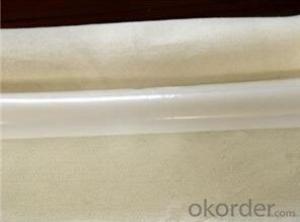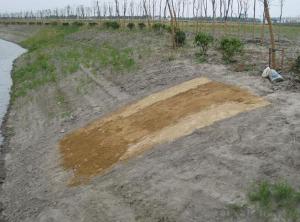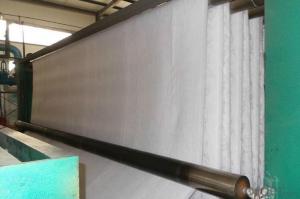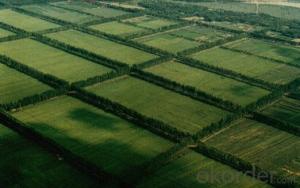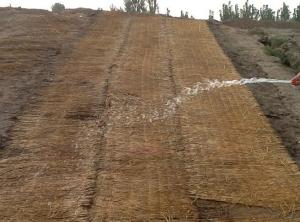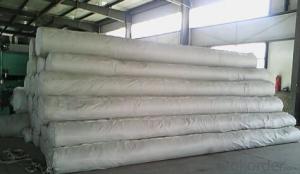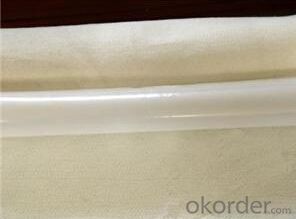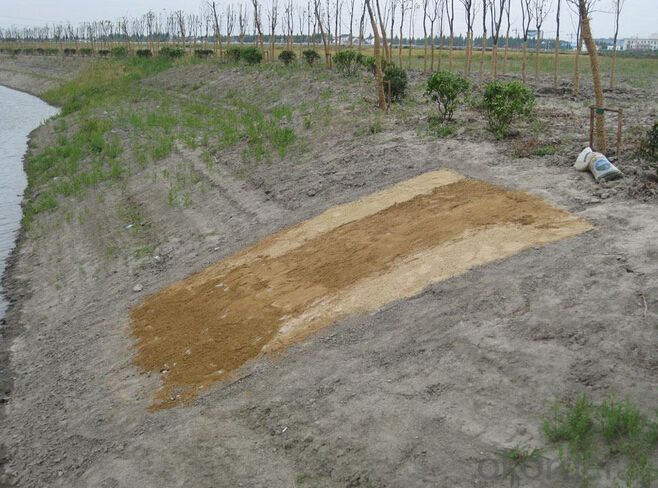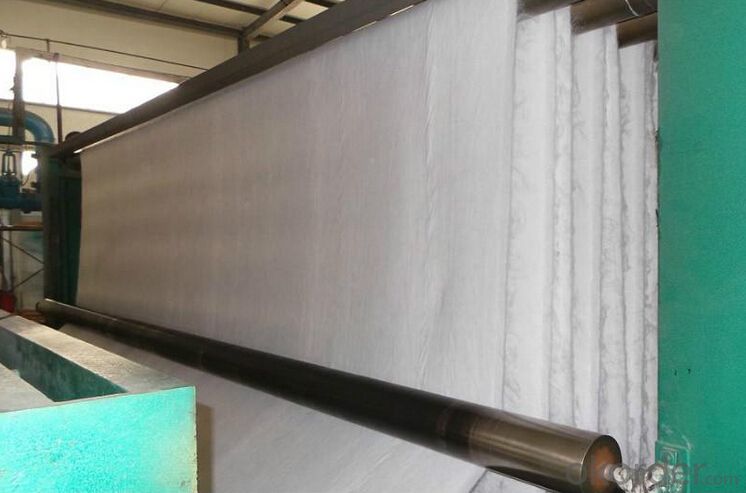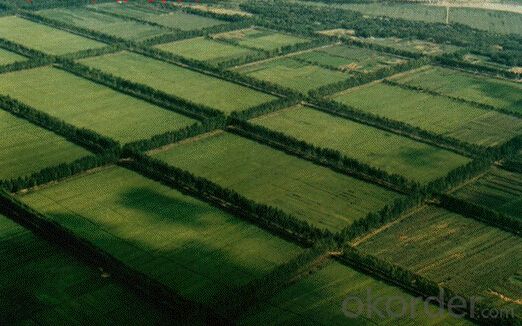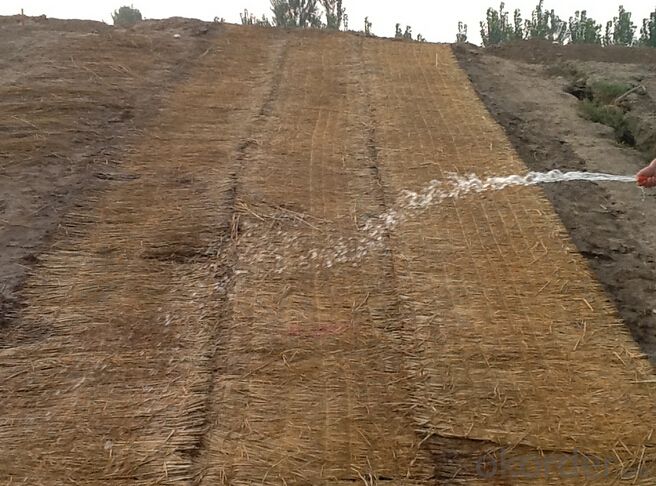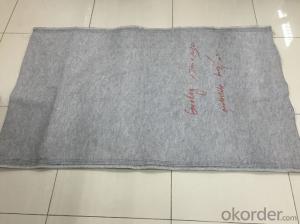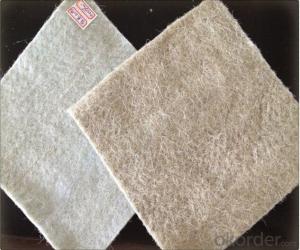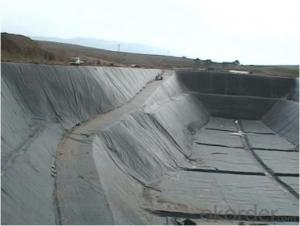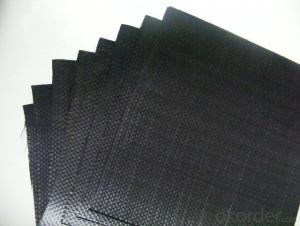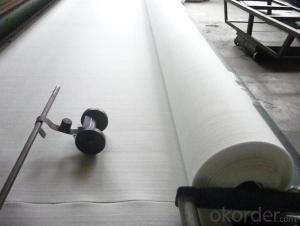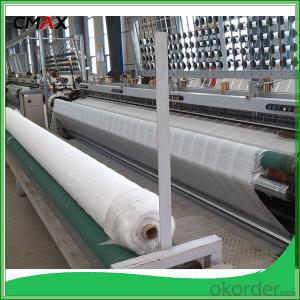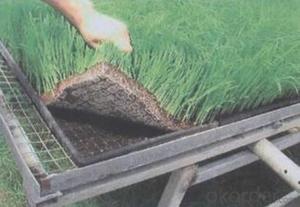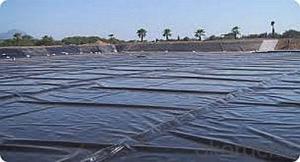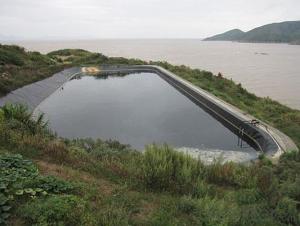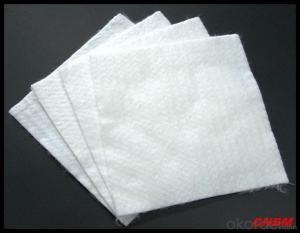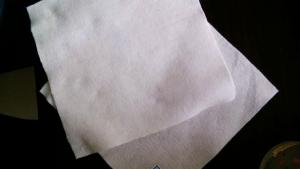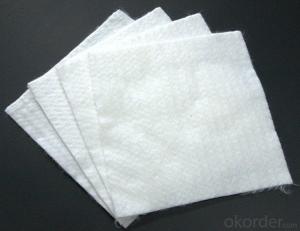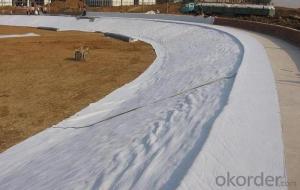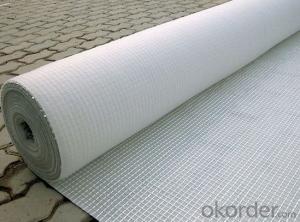High Strength Woven Geotextile - Nutrition Geotextile Geomembrane Factory Supply Direct
- Loading Port:
- Qingdao
- Payment Terms:
- TT OR LC
- Min Order Qty:
- 5000 m²
- Supply Capability:
- 2000000 m²/month
OKorder Service Pledge
OKorder Financial Service
You Might Also Like
Nutrition geotextile in water environmental engineering .
Specification:
Geotextile has excellent permeability, acquired, durability, which can be widely used in railway ,highway, movement hall,Dams,hydraulic structures hence hole, coastal shoal, reclamation,environmental protection and other projects. The main products are Synthetic staple fibers needle punched nonwoven geotextiles and split film yarn woven geotextiles.
Product Feature:
1. Simple and fast construction
2. Achieve the greening effect quickly after construction
3. Due to the grass and composite fiber fabrics become into one integration, so it has the ability of certain degree of flow resistance for the water rising before the grass survive.
4. Composite fiber fabric is a continuous structure from slope top to slope toe, both ends are fixed, has high water flow resistance.
Technical Specification
5.0 m length and 1.05 m width. Reverse side all used filter material. Grass seeds: Bermuda grass (warm season grass), Bahia grass (warm season grass), Kentucky bluegrass (cold season grass), Tall fescue grass (cold season grass), Red fescue grass (cold season grass). Plant height: 0.1 ~ 0.5 m.
| NO. | Items | Specification | Notes | |||
| 1 | Total unit area weight g/sq.m | ≥380 | ||||
| 2 | dimension | width m | 1.0~2.0 | |||
| length m | as per user’s request | |||||
| 3 | Composite fiber fabrics | Material | Polyester Fiber | High strength PET | ||
| Unit area weight g/sq.m | ≥160 | |||||
| Mesh dimension mm | 8×8 | |||||
| Extension strengh kn/m | ≥11 | MD & CD | ||||
| 4 | Filtra layer | Material | Polyester non woven geotextile | |||
| Unit area weight g/sq.m | ≥40 | |||||
| 5 | Grass seeds, Fertilizer | Type | According to actual situation choose 3~5 grass seeds | |||
| Plant height m | 0.1~0.3 | |||||
| 6 | Fiber layer | Material | wood pulp cellulose | |||
| Unit areaweight g/sq.m | ≥15 | |||||
| 7 | flow resistance | ≥4 | not allow appear scour, suction and blanket turn-over etc. damage phenomenon | |||
| M/s | ||||||
| 8 | Anti-UV strengh conservation rate % | 65~80 | 3000hrs Continuously exposure 3000hrs | |||
| 9 | Supporting spare parts | ABS fastening nail | Material | ABS Resin | Fixed between two blankets by length direction | |
| Fiber diameter mm | 35 | |||||
| Nail length mm | 325 | |||||
| Lnail | Material | Steel wire (content 10% zinc-aluminium alloy) | Used to fix single blanket | |||
| Fiber diameter mm | 4 | |||||
| Nail length mm | 200 | |||||
| ABS connecting nail | Material | ABS Resin | Used in the slope between the two blankets ( width direction) | |||
| Nail length mm | 38 | |||||
| Connecting fiber | Material | High strength Polypropylene | Used in the slope between the two blankets ( width direction) | |||
| Length mm | Cut as per request | |||||
APPLICATION:
Generally laid on the river channel, slope protection etc. slope revetment projects, to control the water erosion, soil loss, meantime can reach the effect of slope ecological restoration and landscape greening, making river back to natural.
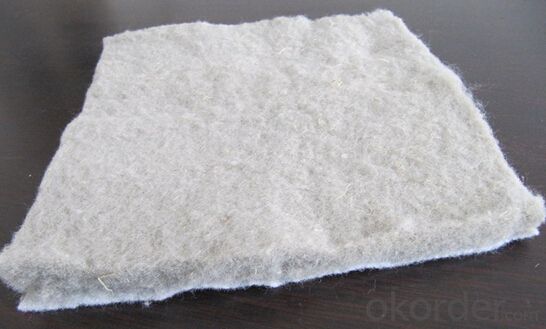
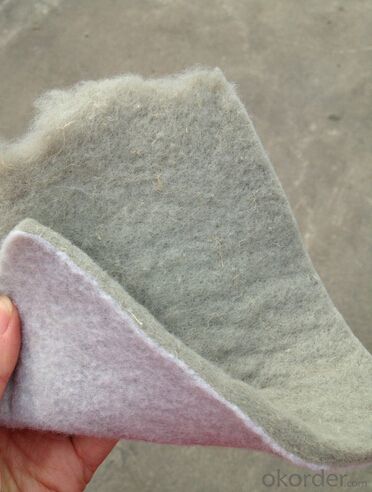
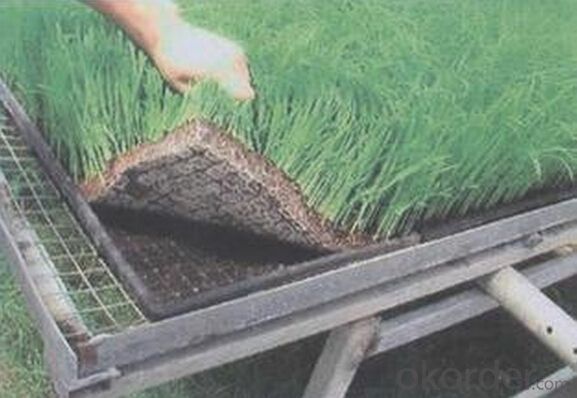
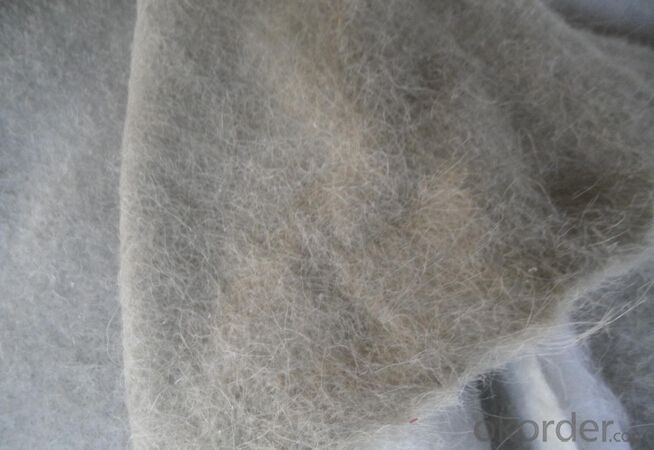
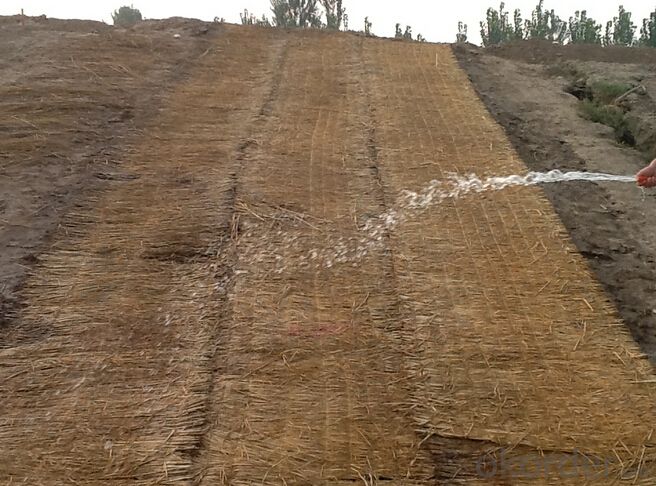
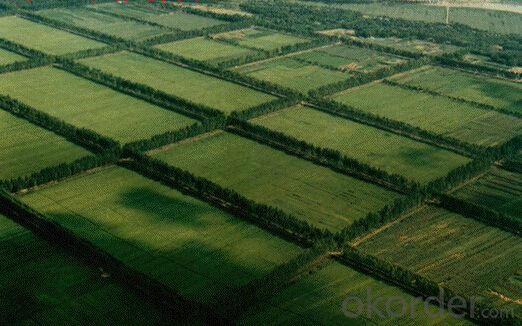
- Q: How do geotextiles help with sediment control in construction sites?
- Geotextiles help with sediment control in construction sites by acting as a barrier to prevent soil erosion and the migration of sediment. They are placed on the surface of the soil, where they allow water to pass through while trapping sediment particles. This helps to retain the soil in place and prevent it from being washed away by rainwater or other erosive forces. Geotextiles also aid in filtration by capturing suspended particles and allowing clean water to drain through, thus preventing sediment-laden runoff from reaching nearby water bodies.
- Q: What are the specifications for geotextiles in coastal protection projects?
- The specifications for geotextiles in coastal protection projects typically include factors such as material strength, permeability, durability, and resistance to UV degradation. The geotextiles used in these projects should have high tensile strength to withstand the forces exerted by waves and tides, as well as good permeability to allow for proper water drainage. They should also be resistant to chemicals and biological degradation, as well as have the ability to withstand harsh weather conditions. Additionally, they may need to meet specific standards or certifications set by regulatory bodies or project requirements.
- Q: What are the applications of geotextiles in coastal engineering?
- Geotextiles have various applications in coastal engineering, including erosion control, shoreline stabilization, and beach nourishment. They are commonly used to prevent soil erosion by acting as a barrier against wave action and currents. Geotextiles can also be employed in the construction of revetments, breakwaters, and groins to enhance coastal protection. Additionally, they facilitate beach nourishment projects by retaining sand and sediment, preventing their erosion and maintaining the shape and stability of beaches.
- Q: What are the factors to consider when designing geotextile-reinforced walls?
- When designing geotextile-reinforced walls, there are several factors that need to be considered. Firstly, the type and strength of the geotextile material must be chosen carefully to ensure it can effectively withstand the loads and stresses imposed by the wall's design and the soil conditions. Secondly, the wall's geometry and dimensions need to be determined, taking into account factors such as the height of the wall, the slope angle, and the overall stability requirements. Thirdly, the soil conditions and properties at the site should be thoroughly examined to understand their impact on the wall's design. This includes factors such as soil type, compaction level, moisture content, and shear strength. Additionally, the design should account for potential environmental factors such as rainfall, groundwater levels, and potential surcharges or seismic activity that could affect the stability of the wall. Furthermore, the construction and installation process needs to be considered, ensuring that the geotextile reinforcement is properly installed and securely connected to the wall structure. Overall, a comprehensive analysis of these factors is necessary to ensure the successful design and construction of geotextile-reinforced walls that are safe, durable, and effective in their intended purpose.
- Q: How do geotextiles reduce construction time and cost?
- Geotextiles reduce construction time and cost by providing a cost-effective solution for soil stabilization, erosion control, and drainage. They act as a barrier against soil erosion and allow for efficient water drainage, reducing the need for expensive excavation and backfilling. Moreover, geotextiles can be easily installed, saving time and labor costs. Additionally, they enhance the overall durability and lifespan of the construction by minimizing soil settlement and preventing the intrusion of fine particles.
- Q: Geotextile vertical and horizontal stretching the gap is too much how to adjust
- Geotextile longitudinal and horizontal tensile strength of the gap adjustment, mainly in the carding, laying the net, drawing three links to control, sort out the ratio of Daofu regulation, shop layer, shop curtain speed ratio, Sticks, input and output differences, and so are the cause of a huge gap, the other fiber curl, and so is the key. For the above adjustment, you will find the law. In order to geotextile stretch the vertical and horizontal adjustment equal.
- Q: How do geotextiles help with soil reinforcement in soft ground conditions?
- Geotextiles provide soil reinforcement in soft ground conditions by acting as a stabilizing layer. They distribute the load evenly, increasing the soil's bearing capacity and preventing excessive settlement. Additionally, geotextiles enhance soil drainage, reduce water seepage, and prevent erosion, thereby improving the overall stability and strength of the soft ground.
- Q: Construction of composite geotextile
- Geotextile as a protective layer of geomembrane, so that the protection of impermeable layer from damage. In order to reduce the UV radiation, increase the anti-aging properties, it is best to use the laying method. Construction, the first use of smaller diameter sand or clay to find the base surface, and then laying geomembrane. Geomembrane should not be stretched too tight, buried at both ends of the soil part of the corrugated, and finally in the shop on the geomembrane with a fine sand or clay shop layer of 10cm or so excessive layer. Puzzle 20-30cm stone (or concrete prefabricated block) for the anti-Chong protective layer. Construction, should try to avoid the stones directly hit the geomembrane, the best side of the film side of the protective layer of the construction. Composite geomembrane and the surrounding structure should be connected with expansion bolts and steel plate pressure bar anchorage, the connection site to brush the emulsion asphalt (2mm thick) bonding, to prevent the occurrence of leakage.
- Q: What is the role of geotextiles in soil reinforcement?
- The role of geotextiles in soil reinforcement is to provide strength and stability to the soil by enhancing its engineering properties. Geotextiles act as a barrier, separating different soil layers and preventing their mixing, which helps in maintaining the integrity of the soil structure. They also help in distributing loads and reducing the potential for soil erosion. Additionally, geotextiles can improve drainage and filtration characteristics of the soil, ensuring better water movement and preventing the buildup of excess pore pressure. Overall, geotextiles play a crucial role in enhancing the performance and longevity of soil structures.
- Q: Can geotextiles be used in coastal erosion control structures?
- Yes, geotextiles can be used in coastal erosion control structures. Geotextiles are commonly used to stabilize slopes, reinforce soil, and control erosion in various construction projects. In coastal areas, they can be employed to prevent erosion of beaches, dunes, or shorelines by acting as a barrier against the movement of sediment and soil. Geotextiles provide an effective solution for coastal erosion control structures due to their permeability, strength, and ability to withstand harsh environmental conditions.
Send your message to us
High Strength Woven Geotextile - Nutrition Geotextile Geomembrane Factory Supply Direct
- Loading Port:
- Qingdao
- Payment Terms:
- TT OR LC
- Min Order Qty:
- 5000 m²
- Supply Capability:
- 2000000 m²/month
OKorder Service Pledge
OKorder Financial Service
Similar products
Hot products
Hot Searches
Related keywords
